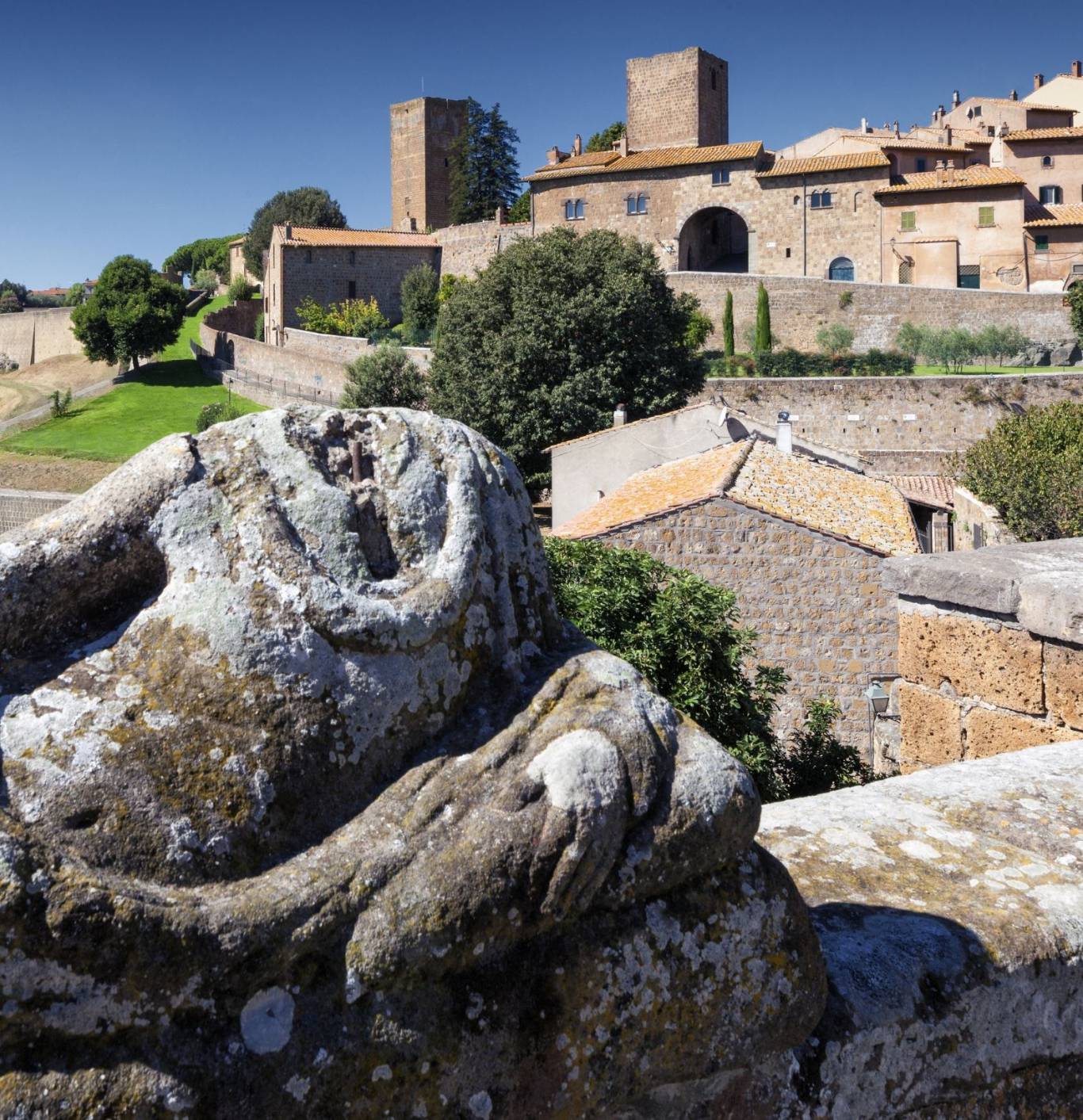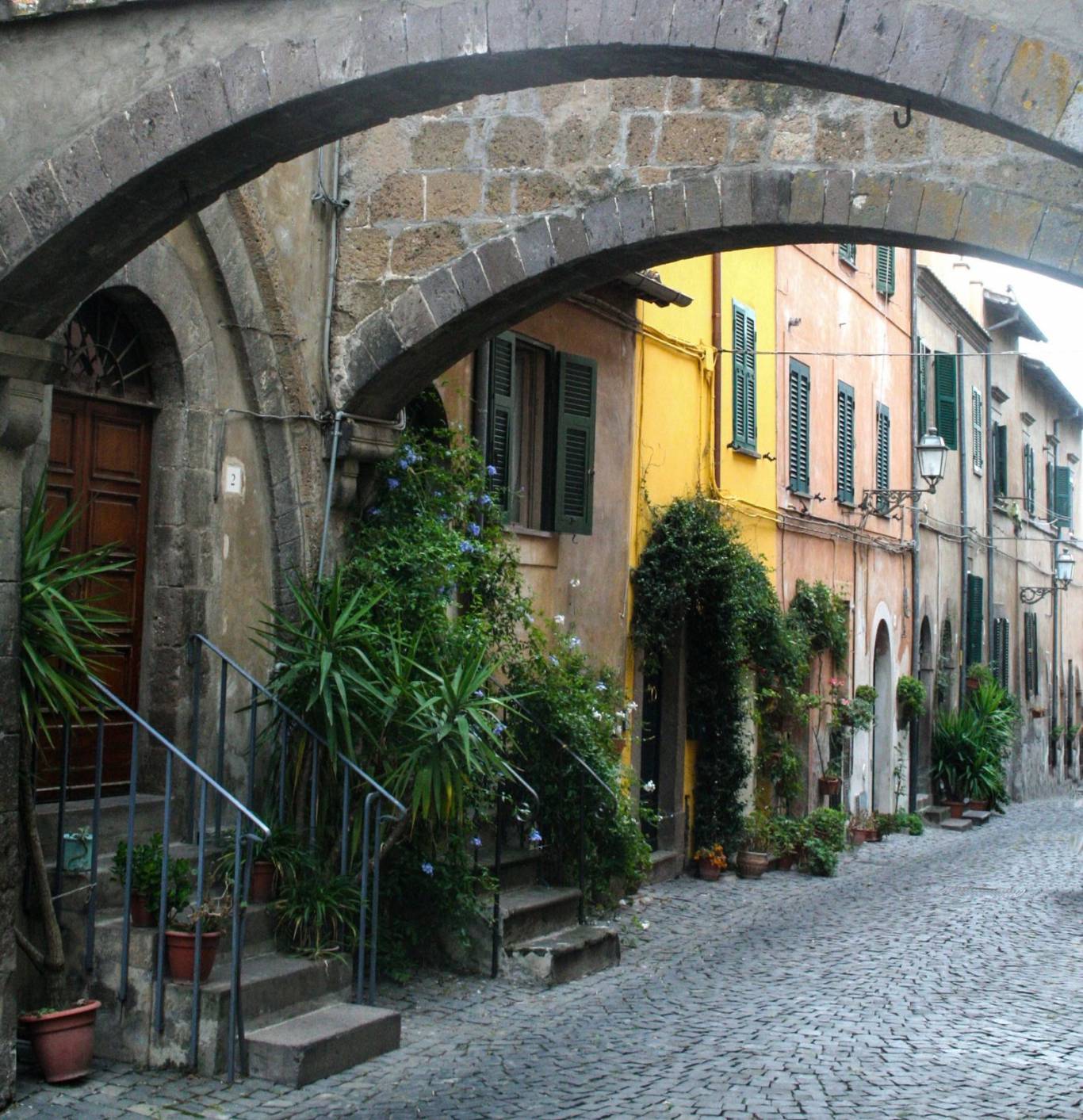Tuscania, a city of art and lavender
Hotel Tuscania Panoramico
Province of Viterbo. Tuscia.
Tuscania, a city of art, is one of the most picturesque centers in central Italy. Characterized by the ancient traces of the Etruscan civilization and medieval architecture that make it a timeless village, the ideal set for many famous historical films; Romeo and Juliet by Zeffirelli, The Incredible Army of Brancaleone by Monicelli, Uccellacci Uccellini by Pasolini and Nostalghia by Tarkovskij.
But Tuscania is also a famous city in Italy, for its wonderful lavender fields and its fairytale atmosphere. There is so much to admire in this enchanting medieval village, ready to await you for an unforgettable stay.
And even more!
Spagnoli Palace. It is one of the most characteristic buildings of the fourteenth-century Tuscania, typical for the external staircase resting on arches (profferto).
Duomo. It was erected on an older building and in consecrating it to San Giacomo again remodeled at the beginning of the 18th century. In the center of the square in front of the church is the large seventeenth-century fountain.
Tower of Lavello. In addition to Palazzo Fani Ciotti with its arcaded courtyard, it was built by Angelo Tartaglia in the fifteenth century and is now the name of the adjacent park, which offers a beautiful view of the churches of Santa Maria Maggiore and San Pietro and of Piazza Basile; also noteworthy is the glimpse of the walls. The Baronial Palace is another original fourteenth-century building placed over a street.
Piazza Basile. Political center of modern Tuscania, it opens towards the west on a panorama of the tome di Lavello. Two interesting places of worship are near the church of S Leonardo overlooking the Largo de Teatro and the church of San Francesco, founded in the 200 following the forms of Franciscan art which it houses in the De Sparapane chapel painted in 1466, examples of Umbrian art. coeval.

San Pietro
At the top of the hill overlooking the town, it is the symbol of the city and the most important monument.
The façade is from the 12th century in the center of this there is a portal; above is a loggia with a marble colonnade closed on the sides by griffins that land animals. Still above, the rose window, in marble and mosaics, is inscribed in a square, in light marble, with the symbols of the four evangelists (angel, ox, lion and eagle) at the corners. To the right of the rose window is a three-faced devil with a snake, to the left a figure (Atlas?); above these there are two mullioned windows.
At the extreme sides of the façade, a bull and a heifer support pilasters and conclude the symbolic representation of the ethema struggle between good and evil illuminated by faith.
The interior, divided into three naves by columns and pillars supporting toothed ring arches, is raised above the presbytery area due to the presence of the crypt and is closed by three apses.
The floor is decorated with mosaics with geometric figures, the ciborium is not original, while the bishop's chair is ancient, of austere workmanship, and the ambo is added from the 10th century. Fragments of the original paintings with Byzantine traits remain in the apsidal basin and in the side apses, as well as some scenes from the life of St. Peter in the upper part of the presbytery.
The crypt has a colonnade and an intermediate space with a door that marks the ancient entrance to the church..




